Meet our Myofunctional Therapist, Kayla Toews!

Why Did I Choose to Pursue Education in Myofunctional Therapy?
As a dental hygienist for 9 years, I have watched many of my patients continue to struggle with unresolved health issues. My career has given me a basic understanding of the connection between daily pains and health struggles and the dysfunctions of the mouth. Knowing about the connection wasn’t enough, and I wanted to understand why the problems were occurring and how to resolve them. I wanted to be able to help patients who were clenching and grinding their teeth, and not sleeping well. Most importantly, I wanted to help the patients who were struggling to breathe properly. I empathize with these patients as I too have suffered from many of the same issues they are experiencing.
Early prevention is always best, which is why I am particularly passionate about identifying risk factors in pediatric patients. Treating or preventing dysfunction at a young age can eliminate a lifetime of pain and discomfort. From birth to 100 years old, it is never too late to improve your health and quality of life!
What is Myofunctional Therapy?
Myofunctional therapy helps patients restore or improve the function of their head, neck, tongue, and craniofacial muscles. Myofunctional therapy also helps to relieve and prevent airway issues, sleep disorders, head, neck, and jaw pain, and poor occlusion of the teeth.
Who Can Benefit From Myofunctional Therapy?
People with a properly functioning tongue and facial muscles should be able to do these four things:
- Breathe through their nose throughout the day and night, not through their mouth.
- Have proper tongue placement. The tongue should naturally rest on the roof of the mouth. The tip of the tongue should be slightly behind the front teeth and the back of the tongue should rest on the soft palate.
- Seal their lips. Even 1mm of space between the lips leads to mouth breathing.
- Swallow properly with a mature swallowing pattern.
If these functions are challenging, feel unnatural, lack ease, or are completely impossible, myofunctional therapy could help correct these necessary functions. Improper function of the tongue and facial muscles can cause sleep disordered breathing and sleep apnea. Tongue posture is important-it helps form the facial muscles and impacts how the facial muscles work together. Nasal breathing is important because it produces nitric oxide and supports the immune system’s health. Breathing through the mouth has even been proven to be linked to anxiety and depression. Mouth breathing keeps us in the constant fight or flight response (sympathetic nervous system) instead of the rest and digest response (parasympathetic nervous system). This can often be a result of poor facial development in the midfacial muscles. Therapy can help restore function and develop muscles.
How Does Myofunctional Therapy Work?
A myofunctional therapist will address the function of the tongue, lips, airway, and facial muscles and the symptoms a patient is experiencing. A myofunctional therapist will then look for a connection between the symptoms and the dysfunction. After the myofunctional assessment, the therapist will provide a customized treatment plan with exercises to strengthen and restore the function of the tongue and facial muscles. Myofunctional therapists have an extended network of professionals that may play a role in a patient’s therapy. In some cases a patient’s therapy may require treatment from an ENT, dentist, orthodontist, allergist, primary care doctor, speech and language pathologist, occupational therapist, or even a nutritionist.
During the initial assessment the therapist will perform a three minute evaluation to see if the patient can breathe through their nose. If the patient is unable to breathe through their nose for three minutes, a referral to an ENT will be recommended to better assess why the patient is unable to breathe properly. If the patient passes the breathing test the myofunctional therapist will move on to assessing tongue placement. If the tongue is not touching the roof of the mouth the myofunctional therapist will investigate causes that are contributing to the patient’s inability to properly place their tongue to the roof of their mouth. The therapist will identify if the patient has a tongue tie by evaluating how they move their tongue. The therapist will also evaluate if the patient has a narrow palate that does not allow enough space for the tongue to comfortably rest on the roof of the mouth. Once the myofunctional therapist determines why the patient’s tongue is not touching the roof of the mouth they are able to create a plan for the patient that results in having a fully functioning tongue, restful deep sleep, efficient breathing, and a healthy immune system!
What are the Benefits of Myofunctional Therapy?
Myofunctional therapy can eliminate lifelong health problems! Patients who have an improperly functioning tongue and improperly functioning facial muscles experience an increase in dental problems such as cavities, periodontal disease, and forcible wear on teeth and jaw joint. These patients are also more likely to experience TMJ disorders, headaches, migraines, upper airway and sleep disorders, teeth grinding, and sleep apnea. A person breathing through their mouth is getting 18% less oxygen then a person breathing through their nose. The benefits of myofunctional therapy can be endless in regards to overall health.
If you are interested in learning more about myofunctional therapy, or scheduling an appointment please call our office at 970-984-8252. You can also send Kayla an email at ktoewsmyotherapy@gmail.com
